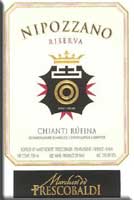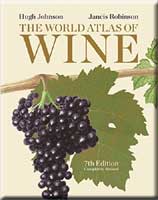|
|
The 31 October 2011 Wine Spectator featured Italian Wine and Food, starting with a cover of Angelo Gaja. We had just enjoyed an older Gaja wine during a long lunch here in NY with a friend from Albany. But I get ahead of myself as the story of wine in Italy starts at least as early as the glory days of the Greek Empire when they called their neighbor Oenotria, or the land of wine. Today, Italy is still the land of wine, ranking first in wine production with almost 5,000,000 metric tons of wine per year about 7% more than France (number two) despite having less than half the area. The US ranks fifth in wine production at 2,300,000 metric tons and has about 10 times the area of France.
So why don't you know more about Italian wines? Italy didn't exist until Garabaldi (and others) unified the various city states and Papal holdings. He started in 1850 and finally got control of Rome in 1870. Before then, France had set up a vineyard rating system with rules for grape types, production methods, production limits, etc. The important red wines were cabernet sauvignon and merlot in Bordeaux and pinot noir in Burgundy. For better or worse, these were the wines that traveled the world on English ships while Italy produced oceans of plonk to be consumed locally from many other grape types. It wasn't until the 1960s that the Italian Denominazione di Origine Controllata (DOC, much like the French AOC) came into existence. Even more recently stricter regulations added et Guarantia making some vineyards DOCG.
Some wines are known by their location and some by their grape type. Barbera is a grape type and Barolo is an area. To which you can add the problem that many regions make both red and white wines ranging from sweet to dry and don't forget lightly sparkling (frizzante) and really sparkling (spumante - not to be confused with ice cream).
To add to the confusion, some Italian winemakers are ignoring the rules, using cabernet sauvignon and merlot grapes, and French winemakers to produce "super Tuscans." These are wines from Tuscany that do not adhere to the DOC rules. Frenchman Michel Rolland from Pomerol advises over 100 wineries in 13 countries and Italian Alberto Antonini who has been involved with the Antinori and Frescobaldi families in Italy has similarly advised about 100 wineries in as many countries. Rolland is criticised in the movie Mondovino because0 he favors a style similar to that liked by Parker, who is the 800 pound gorilla in the tasting room.
|

|

|
The northwestern corner of Italy, next to France, south of Switzerland contains Turin (the home of the car industry), Milan (the home of the fashion industry), and Genoa (the home of Christopher Columbus). More importantly, at least for this dissertation, it contains Piemonte, Liguria, Lombardy, and Emilia-Romagna. Most of the wine around Turin becomes vermouth. South and west of Turin, centered on Asti (as in the spumante), is Piemonte. The southwest corner contains the small village of Barolo and its surrounding viticultural area. Next door is Barbaresco and its region. These wines are big and bold, rewarding long cellar times. Both are made from the Nebbiolo grape and have been awarded DOCG status. Other grapes used in the region are Barbera (dark, tannic, and plummy - good with rich food), Dolcetto (lighter, a perfect summer quaff), and Moscato of Asti Spumante fame.

|

|
The wine mentioned at the start of this article was a 1995 Gaja Barbaresco Sori Tildin. We were most impressed. Despite its advanced age it was still powerful, smooth, and long-lasting. The link goes to the Wine Access site where Steven Tanzer has rated this at 94, although Parker put it at 91, and Wine Spectator gave it a mere 83??? The tasting also included a 1997 Joseph Phelps Insignia and a 1998 Ch Pichon-Longueville - all wonderful wines that had been stored well. Like most American wines, there was a bit of fruit left in the ancient Insignia. If you don't routinely drop over $100 per bottle, on the right is one from our cellar. We bought this in 2009 for $8 from the Wine Cask near Boston.
|

|

|
Venice is in the northeastern corner of Italy and the surrounding region is called Veneto. The most well-known wines are Valpolicella and Bardolino. They are dry, fresh, and light-bodied. We find them perfect for casual meals that are still flavorful. Amarone della Valpolicella is a rich Italian dry red wine made from the partially dried grapes of the Corvina, Rondinella, and Molinara varieties. Originally it was made by accident and the first recorded sale was in the late 30's. No official records were kept until the early 50's when the production was purposeful. It did not receive its own DOC status until 1990. Ripasso is produced when partially aged Valpolicella is contacted with the lees of the Amarone, including the unpressed grape skins. The lees still contain sugar and the Valpolicella undergoes a second fermentation.
|

|
|
The resulting wine is more tannic, with a deeper color, more alcohol and more extract. It is an excellent BBQ wine and also fine with lamb from the grill. The major shippers in this area are Bolla, Bertani, and Folonari.
Prosecco is made in this region and the neighboring Fruili region. It has DOC status and some areas achieved DOCG status in 2009. It is an inexpensive, but fairly good, sparkling wine produced by the charmat method (outlawed in Champagne). In the charmat method (aka the Italian method) the wine undergoes a secondary fermentation in stainless steel tanks or steel vessels covered with vitreous enamel rather than individual bottles, and is bottled under pressure. In Champagne and Spanish Cava the secondary fermentation takes place in the bottle.
|
|
Tuscany is one of the most famous regions of Italy and Chianti is its most famous wine. Tuscany alone produces more wine than the US in most years. Forty years ago Chianti was made from about 20% white wine grapes interplanted in the vineyards with sangiovese. This stopped over the next couple decades. The best Chiantis come from the Chianti Classico area running from Florence to Siena although the Chianti Rufina area, at higher elevations northeast of Florence, is notable. The 2007 vintage was quite good with the 2006 almost as good. On the right is a Nipozzano Riserva. We had this at La Gondola in Cupecoy in 2011. It was so good that I bought a couple cases when we returned to the US.
South of the Chianti Classico region is Brunello di Montalcino, a clone of sangiovese. The area is wild and the new-fangled ideas that exist to the north haven't made many inroads here. The wines are big, bold, and aged longer. The 2006 and 2007 vintages were very good and the 2008 is close. Bolgheri to the west and Maremma to the south are lesser known regions that have been making fine wines recently, albeit with a bit more fruit. To the east is Montepulciano where other red grapes can be used to soften Sangiovese's aggressive tannins. I think they make quite nice wines. All of these wines work well with sturdy Italian red sauces and hearty meats.
|

|
There are many more wine regions in Italy as the map above shows. They are not as well known or as well distributed as the ones mentioned above. They may be quite good, especially at the price they command. The Alto Adige region, the upper part of the Adige Valley, centering on Bolzano is closely related to nearby Austria and much of the wine from this region heads north to Austria. They make good, but not great, reds and whites. Umbria is best known for Orvieto, a lovely white wine. Southern Italy makes a lot of wine. The climate is not the best for fine wines, but Corvo is quite drinkable. Much of the wine is used for blending or local consumption. Ask for advice from the restaurant's sommelier or the seek advice in the wine shop.
Of the recent vintages 2004 and 2006 were great and 2009 was close. If you have a choice, skip the 2007 and 2005 and avoid the 2002.
On the island, Il Nettuno Restaurant and Gondola Restaurant have the largest lists of Italian wines. Spiga has a smaller but carefully selected list. French wines abound in the various shops, but Italian wines are a bit harder to find. In the US, Lot18 frequently has good values on Italian wines and free shipping with a mere four bottle order. Saratoga Wine Exchange has a vast selection of wines and has frequently had sales on good Italian wines. Both will fill your mailbox with offers if you sign up with them. has a vast selection of wines and has frequently had sales on good Italian wines. Both will fill your mailbox with offers if you sign up with them.
|
The World Atlas of Wine by Hugh Johnson, Jancis Robinson ($31.50, $22 used)
- The World Atlas of Wine is something of a dream-team production. The names Hugh Johnson and Jancis Robinson alone recommend any book on which they appear. The fifth edition (in 30 years) of this astonishingly successful book lives up to, and surpasses, its predecessors. In 350 densely packed but never clotted pages the authors manage the extraordinary feat of characterizing wine production throughout the world, from Vancouver Island to Japan--Buddhists first planted vines in that inhospitably precipitous, monsoon-lashed land over a 1,000 years ago. After a substantial introductory section dealing with the history of wine, its making, storage, and enjoyment, we're off. Starting with (where else?) France and Burgundy, each wine area is summarized in terms of its geography, climate, and preferred vines and the appellations, laws, and traditions that govern production. The discussion of Pomerol, for example, tells you a great deal in one short page. Even since 1994, when the fourth edition came out, vast changes have swept the wine world, and many parts of the atlas have been correspondingly completely reworked. South America, Canada, Southern France, Italy, Greece, Eastern Europe, and the Eastern Mediterranean are among the areas that have benefited. The regional maps that form the core of the book are a triumph of clarity. The whole production constitutes a brilliant achievement of organization and synthesis, forming an indispensable resource for any wine lover at all interested in where the wine they drink comes from and why it tastes the way it does.
There is an 2006 edition available for about $23 (new) and $2 (used) and a 2005 pocket edition for about $3 used.
|

|
|









